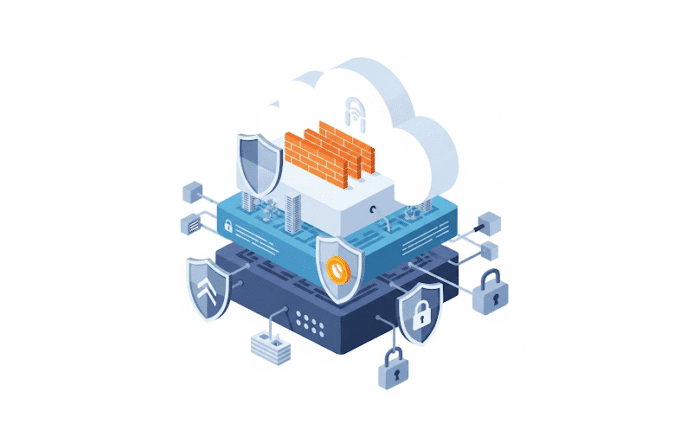Cloud-native architectures—powered by containers, microservices, and serverless computing—are transforming how organizations build and deploy applications. According to Gartner, over 95% of new digital workloads will be deployed on cloud-native platforms by 2025. However, this shift introduces unprecedented security challenges. Unlike traditional monolithic applications, cloud-native environments are highly dynamic, ephemeral, and distributed, making them prime targets for attackers. Let’s understand Why Runtime Protection in Cloud-Native Architecture is Important?
Runtime protection has emerged as a cornerstone of modern cybersecurity, offering real-time defense mechanisms to secure applications while they’re running in production. In this article, we’ll break down what runtime protection entails, why it’s critical for cloud-native architectures, and how you can implement it effectively to safeguard your organization.
What is Runtime Protection?
Runtime protection refers to the continuous monitoring, detection, and mitigation of threats targeting applications and workloads during execution. It operates at the runtime layer, where applications interact with users, data, and other systems. This makes it uniquely suited to address threats that static security tools (e.g., SAST, DAST) cannot detect.
- How it differs from traditional security : Static tools analyze code or configurations before deployment, but runtime protection focuses on securing live environments. For example, it detects unauthorized API calls, privilege escalations, or lateral movement within a Kubernetes cluster.
- Key components :
- Monitoring : Observing workload behavior in real-time.
- Detection : Identifying anomalies such as unexpected network traffic or file system changes.
- Response : Automatically blocking malicious activities or isolating compromised containers.
For a deeper dive into runtime security, refer to this Red Hat guide on container security .
Why Runtime Protection is Essential in Cloud-Native Architectures
Cloud-native environments introduce unique security challenges that demand specialized solutions:
Dynamic and Ephemeral Nature
Containers and serverless functions are transient by design, often existing for mere seconds or minutes. Traditional security tools struggle to keep pace with this rapid churn. Runtime protection fills the gap by providing continuous visibility into these short-lived resources.
Unique Vulnerabilities
Misconfigurations, insecure APIs, and vulnerabilities in orchestration platforms like Kubernetes are common attack vectors. For instance, an unpatched Kubernetes API server could allow attackers to escalate privileges and gain full control of the cluster. Runtime protection identifies and mitigates such risks in real-time.
In cloud environments, providers secure the infrastructure, but customers are responsible for securing their workloads. Runtime protection ensures compliance with this shared responsibility model by actively defending against threats targeting application layers. For more details, see AWS Shared Responsibility Model .
Key Capabilities of Runtime Protection
Modern runtime protection tools offer advanced capabilities designed to address the complexities of cloud-native environments:
- Behavior Modeling : Establishes baselines of normal activity using machine learning and anomaly detection. For example, if a container suddenly starts communicating with an unknown IP address, runtime protection flags it as suspicious.
- Threat Detection and Prevention : Detects malware, unauthorized access attempts, and lateral movement within clusters. Tools like Aqua Security and Sysdig provide robust threat intelligence.
- Policy Enforcement : Enforces granular policies governing container communication, resource usage, and access controls. For instance, you can define policies to block outbound connections to known malicious domains.
- Incident Response : Automates incident response workflows, including quarantining compromised containers, generating forensic logs, and alerting security teams.
To explore cutting-edge runtime protection tools, check out Aqua Security and Sysdig Secure .
Benefits of Runtime Protection
Implementing runtime protection delivers tangible benefits for cloud-native environments:
- Enhanced Visibility : Gain real-time insights into workload behavior, network traffic, and system calls.
- Proactive Threat Detection : Identify and neutralize threats before they cause damage. For example, runtime protection can detect cryptojacking malware running inside a container.
- Improved Compliance : Ensure adherence to regulatory standards like GDPR, HIPAA, and PCI-DSS by enforcing strict access controls and logging all activities.
- Reduced Attack Surface : Minimize vulnerabilities through automated defenses, workload immutability, and least privilege enforcement.
For compliance-specific guidance, visit GDPR Official Website .
Challenges in Implementing Runtime Protection
Despite its advantages, implementing runtime protection comes with challenges:
- Complexity : Monitoring thousands of containers and services across multiple clusters requires scalable solutions.
- Performance Overhead : Poorly configured tools can introduce latency or resource contention. To mitigate this, choose lightweight agents optimized for cloud-native environments.
- Integration Challenges : Ensuring seamless integration with DevOps pipelines and CI/CD tools is crucial for maintaining agility.
For practical advice on overcoming these challenges, refer to CNCF’s Security Whitepaper .
Best Practices for Effective Runtime Protection
To maximize the effectiveness of runtime protection, follow these best practices:
- Adopt Zero Trust Principles : Assume every workload is untrusted until verified. Use identity-based access controls and enforce least privilege.
- Leverage AI/ML : Use artificial intelligence and machine learning to detect subtle anomalies that traditional tools might miss.
- Regular Policy Updates : Continuously refine policies based on threat intelligence and emerging vulnerabilities.
- Multi-Layered Defense : Combine runtime protection with other security measures, such as image scanning, network segmentation, and secrets management.
For a comprehensive zero trust framework, read this Microsoft Zero Trust Guide .
Case Studies or Real-Life Examples
Real-world examples underscore the importance of runtime protection:
- Case Study 1 : A leading financial services company prevented a ransomware attack by leveraging runtime protection to detect unusual API calls targeting its Kubernetes cluster. The tool automatically quarantined the affected pods, preventing further spread.
- Lesson Learned : Organizations that fail to implement runtime protection risk falling victim to costly breaches. For instance, the infamous SolarWinds attack exploited runtime vulnerabilities to move laterally across networks.
For more case studies, visit SANS Institute .
As cloud-native architectures become the backbone of modern IT, runtime protection has emerged as a critical line of defense. By continuously monitoring, detecting, and mitigating threats in real time, runtime protection ensures that your applications remain secure—even in the face of evolving cyber threats.
To summarize:
- Runtime protection addresses the unique challenges of dynamic, scalable environments.
- It offers unparalleled visibility, proactive threat detection, and compliance support.
- By following best practices and leveraging cutting-edge tools, you can build a resilient security posture.
Don’t leave your cloud-native workloads exposed. Start implementing runtime protection today and take a proactive step toward securing your organization’s future.
For further reading, explore these resources:














Leave a comment